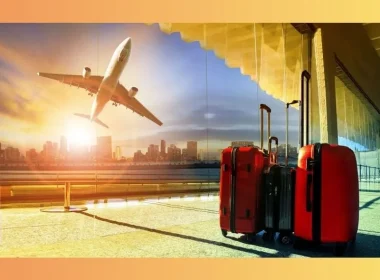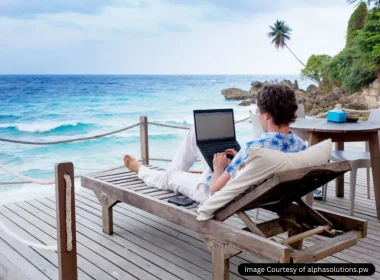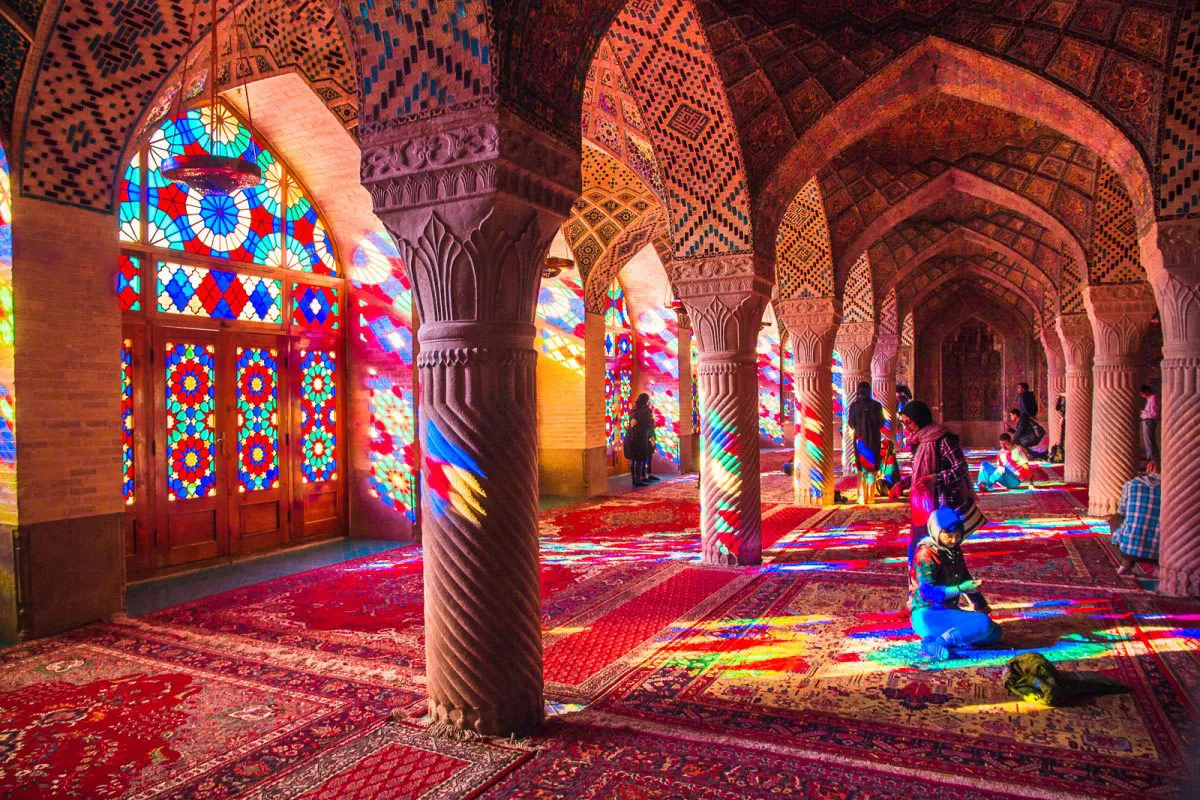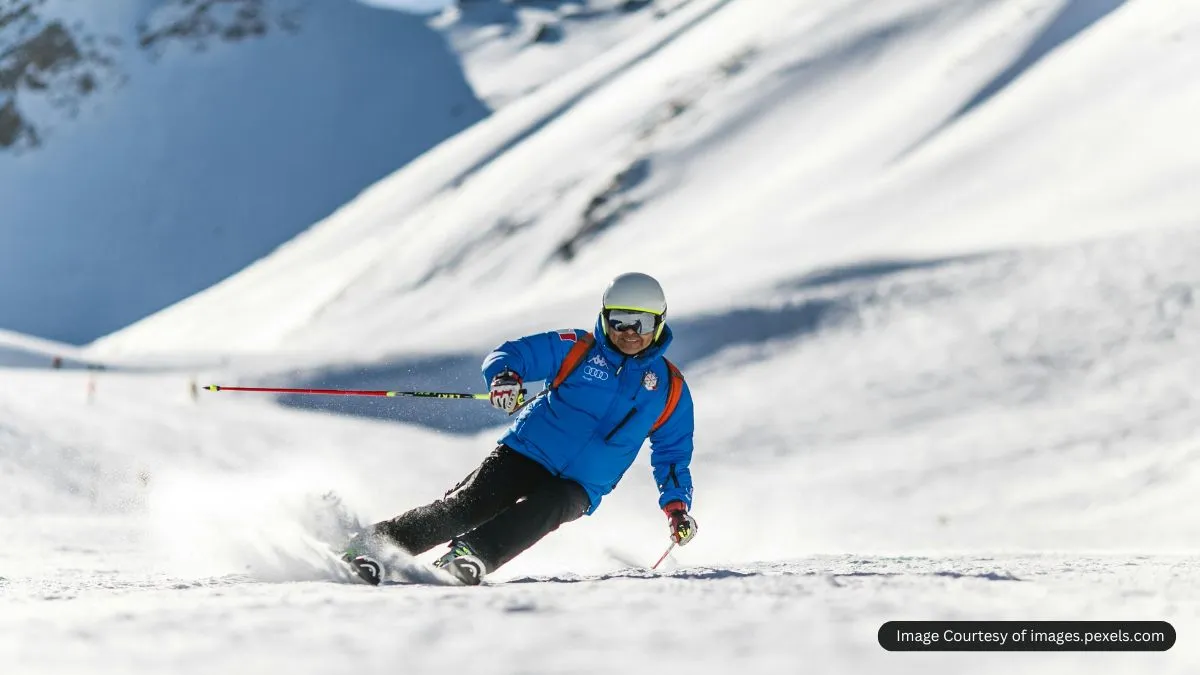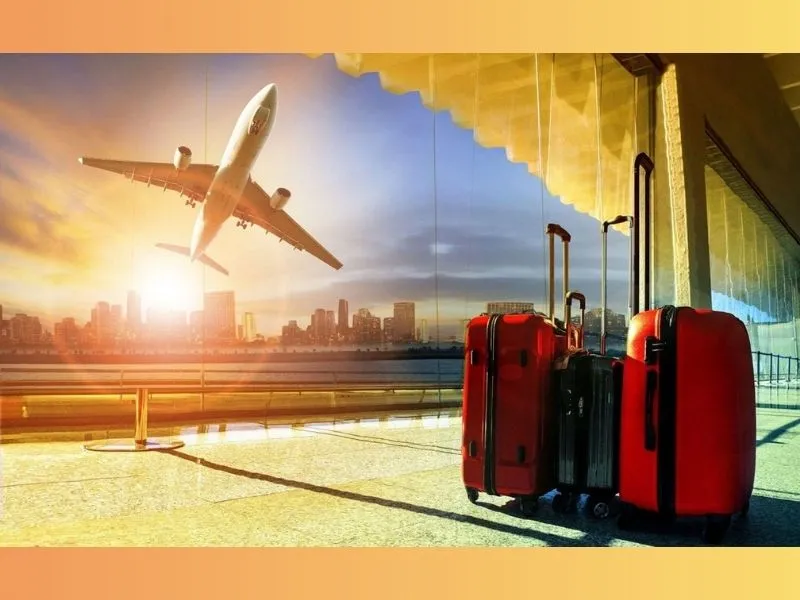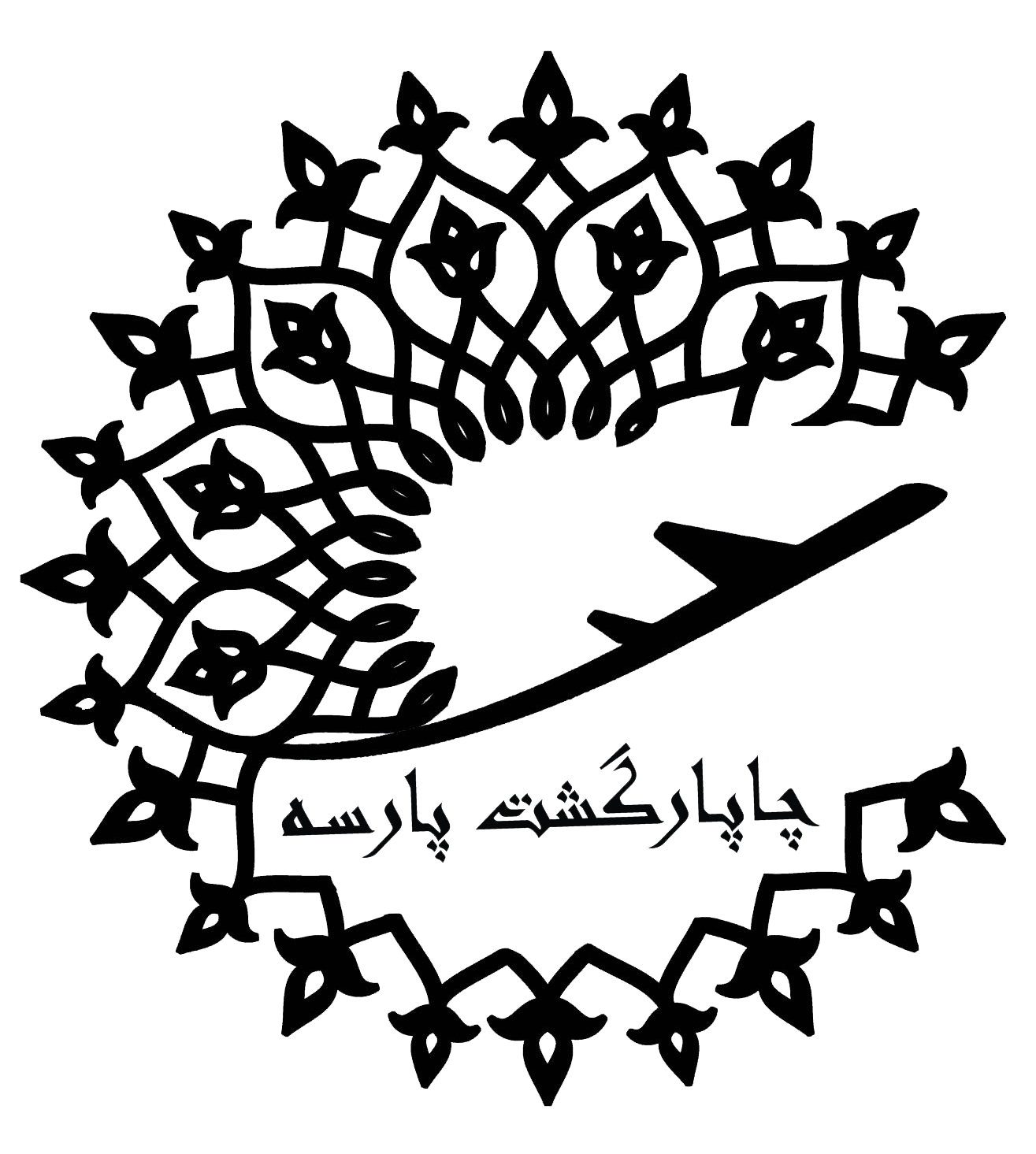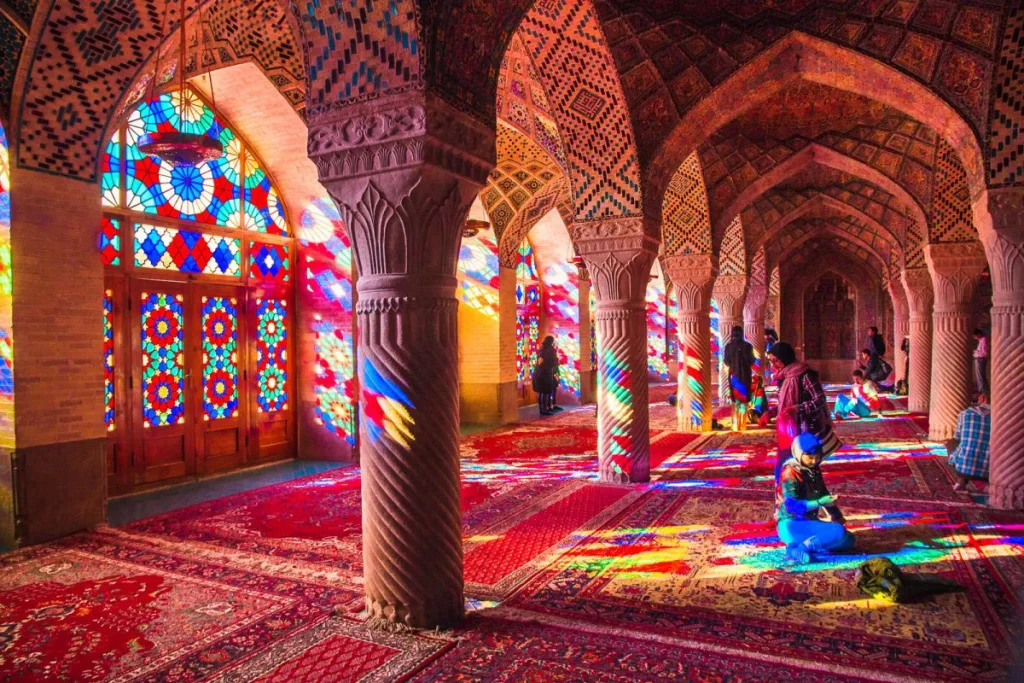
Exploring Iran, travelers share diverse Iran trip styles, from ancient-city wanders to desert-adventure routes. According to "immersiveiran" website, suggests that knowing different travel styles can lead to a better experience in Iran.
Iran is a place of layered histories, rich traditions, and changing landscapes: the echoes of ancient kings and caravans linger in palaces and roadside inns; saffron-gold dunes and desert oases meet mountain passes where villages keep their old rhythms; bustling bazaars hum beside mosaic-faced mosques; islands stretch into quiet coastlines; tables are filled with fragrant stews, saffron rice, and age-old recipes passed down through generations; and everywhere, people welcome you with open hearts.
This guide walks you through popular Iran trip styles and the main types of tours in Iran, so you can match a trip to your interests, comfort level, and time.
Why Understanding Iran Travel Styles Matters

Iran is multi-faceted, with so much to offer. Every traveler arrives with expectations: some want to stand inside a centuries-old caravanserai and hear stories of trade routes; others crave dawn on a desert dune or a guided visit for Ziarat.
Picking the right Iran tour type helps avoid disappointment and makes planning far easier — from choosing the best season and packing the right gear, to knowing whether a trip will demand long drives, domestic flights, or steady walking.
It also helps set realistic comfort and budget expectations, ensures you meet cultural requirements for certain sites, and makes it simpler to decide when to book a licensed operator or a women-led group. In short: the better the match between your interests and the trip style, the more time you’ll spend enjoying saffron ice cream and tea with hosts — and the less time you’ll spend juggling logistics.
Popular Iran Trip Styles
- Culture & History
- Nomads
- Religious & Ziarat
- Adventure & Nature
- Tours suitable for women
- Services suitable for business people
Each category below includes what to expect, who it suits, sample highlights, and a short itinerary idea.
Culture & History — Classic, Off‑the‑Beaten‑Path, and Experience-Based
What it is: Tours focused on Iran’s built heritage, museums, UNESCO sites, and living traditions. This category spans polished classic routes (Shiraz– Isfahan–Tehran–Yazd-Kashan) to slower, local‑led experiences that go off the main tourist track.
Who it’s for: First‑time visitors, history lovers, photographers, and anyone who enjoys museums, architecture, and local crafts.
Sample highlights: Naqsh‑e Jahan Square (Isfahan), Persepolis (near Shiraz), bazaars and caravanserais, traditional tea houses, pottery villages, and artisan workshops.
What to expect: Moderate walking, city logistics, comfortable hotels available at every level, and many opportunities for guided interpretation. Meals with local families or workshop visits are common in experience‑based itineraries.
Sample short itinerary (6–8 days): Tehran (national museums) → Kashan (traditional houses, pottery) → Isfahan (squares, bridges, mosques, palaces, bazaar) → Shiraz (ancient palaces, mosques, gardens, poetry).
Seasons: All year round, but perfect in spring and fall
Tips: Choose an experience-based option if you like immersiveiran experiences.
Nomad Tours
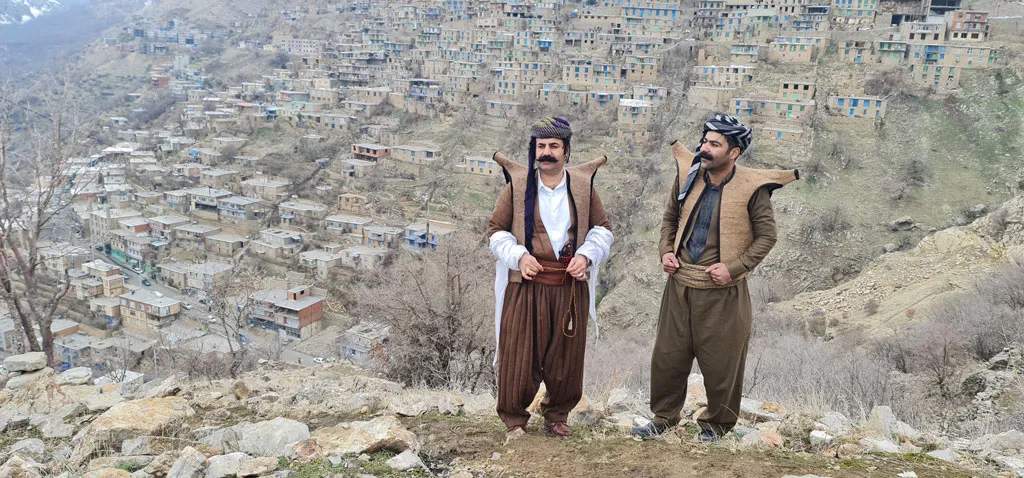
What it is: Nomadic tours introduce travelers to Iran’s living tribal traditions — nature-oriented lifestyle, seasonal migrations, tented camps, and hospitality rooted in centuries of pastoral migratory life. These journeys emphasize human connection, landscapes, and cultural resilience. Travelers may join Qashqai, Bakhtiari, or Shahsavan nomads in their summer pastures.
Who it’s for: Travelers curious about authentic cultural encounters, photographers, anthropologists, families seeking educational experiences, and anyone who values direct interaction with host communities.
Sample highlights: Staying in nomadic black tents (siah chador), learning about herding and weaving, shepherding, horseback riding or hiking alongside families, festivals, and sharing meals around open fires under starry skies.
What to expect: Simple living with basic but welcoming hospitality — expect floor seating, fresh bread and dairy from the herd. Access often involves drives into remote valleys or foothills, sometimes combined with hikes. Local guides familiar with the tribes ensure respectful and meaningful exchanges.
Main Accessibility: Mainly from Shiraz, Isfahan, Kermanshah, and Ardebil.
Seasons: Spring and summer, few tribes might also be accessible in fall and winter
Tips: Travel in spring or summer when the nomads are in their summer pastures. Be flexible — nomadic life follows nature, not timetables. Respect hosts’ privacy and ask permission before photography.
Religious & Ziarat Tours
What it is: Pilgrimage and faith‑oriented trips visiting shrines, holy sites, and religious ceremonies important to Shia Islam, Zoroastrianism, and/or Christianity.
Who it’s for: Pilgrims and spiritually motivated travelers seeking guided access to Ziarat sites, or sites important to minor communities in Iran.
Sample highlights: The shrines of Mashhad (Imam Reza), Qom (Hazrat Masoumeh), Shiraz (Shah Cheraq) and other regional shrines and religious complexes related to Islam. Zoroastrian highlights concentrated in Yazd and nearby cities. Or the churches and cathedrals in Isfahan and/or northwest Iran.
What to expect: Itineraries planned around prayer times and major religious events (for Ziyarat tours); respectful dress codes and possible gender‑specific areas at some sites. Guides familiar with religious protocols and respectful behavior are essential.
Sample short Ziyarat itinerary (4–6 days): Tehran → Qom (pilgrimage, religious studies) → Mashhad (major shrine visit) — typically paired with quiet, reflective moments and time for local religious experts to answer questions.
Sample short Mixed religions/spiritual itinerary (10-20 days): Tebriz→ Jolfa (Armenian Ensemble of Iran) → Takhte Soleyman (Zoroastrian relic) →Kermanshah (Sufism) →Isfahan (Christianity and Islamic relics) → Shiraz (Islamic) →Yazd and nearby towns (Zoroastrian)
Seasons: all year round
Tips: Confirm accommodation near shrines in advance during high‑season religious events; expect larger crowds during major observances.
Adventure & Nature — Mountains, Desert, Islands, Canyons, Jungles, & More

What it is: Active itineraries for travelers who are after nature, relaxation, and/or adrenaline as an Iran trip style: multi‑day treks in the Alborz or Zagros, desert camping and dune hikes, water canyon hikes, jungle walks in the lush north, and island or beach stays along the Persian Gulf.
Who it’s for: Hikers, climbers, wildlife and landscape photographers, and travelers seeking active, outdoors‑centered experiences.
Sample highlights: Mount Damavand treks, Jashak Salt Dome walks, Lut Desert dunes at sunrise, explorations in Alamut Valley, water canyon hikes and swims, island hopping in the Persian Gulf, and Hyrcanian forests near the Caspian Sea.
What to expect: Active days, variable conditions (heat in deserts, cold in mountains, humidity by the Caspian), guide-led treks for safety, camp setups or local ecolodges depending on the tour.
Sample short itineraries: Tehran (foothills, Alamut Valley, or coastal island stay with a flight), Shiraz (water canyons), Isfahan (deserts), etc.
Seasons: variable depending on the region and type of activity
Tips: Fitness level matters — check daily distances and elevation. Pack layers and sun protection.
Iran Trip Styles Suitable for Women
What it is: Carefully organized itineraries that respond to specific preferences some women travelers have — such as female‑led guides, small groups of women only, and cultural experiences only accessible to women.
Who it’s for: Solo female travelers, women traveling in small groups, or anyone who prefers a women-focused environment.
Sample highlights: Gaining a feminine aspects of Iran, female guides, dance and music experiences, wedding ceremonies, healthcare and beauty treatments, craftswomen hosting small workshops, women‑led city walks, and guesthouses run by women.
Seasons: All year round, depending on the region and type of activity
Services Suitable for Business People
What it is: Short, efficient itineraries and logistics designed for business travelers who visit for meetings, exhibitions, conferences, etc. Emphasis on punctual transfers, comfortable accommodations, and flexible schedules.
Who it’s for: Business visitors, delegates, consultants, and professionals with limited time who want a reliable and polished experience.
Sample highlights: City‑center hotels with meeting facilities, fast local transfers, tailored one‑day cultural excursions, and services like airport CIP.
What to expect: Smooth ground arrangements, private vehicles, experienced coordinators, and the ability to adapt the schedule quickly.
Seasons: all year round
Tips: Provide clear itineraries and confirmations for meeting times; request airport meet-and-greets.
How to choose between Iran trip styles
- Decide your pace. Do you want a slow cultural deep dive or active days in the mountains and desert?
- Time available. Short visits (3–5 days) fit business and selected cultural highlights; two weeks or more lets you mix adventure and deeper regional experiences.
- Comfort level & accessibility. Consider transfer lengths and accommodation standards.
- Cultural expectations. Religious sites and traditional areas require modest dress and respectful behavior — your guide will advise you.
Final Thoughts on Choosing Your Iran Trip Type
There’s no single best way to travel in Iran — only the trip that fits your curiosity, schedule, and comfort. Whether you prefer quiet evenings under starry desert skies, the majesty of sun going down above ancient palaces, the steady rhythms of bazaars, or guided hikes through valleys, matching your needs to one of these Iran trip styles will make your time here more rewarding.
FAQs Regarding Iran Trip Styles
Is it safe to travel to Iran right now?
Several governments advise against travel or urge great caution; that said, thousands of visitors continue to travel and commonly report low rates of street crime and warm local hospitality when they follow sensible precautions. The truth is, Iranians are so hospitable that you won’t be on your own even in force majeure situations.
Do I need a visa? How do I get one?
A considerable number of nationalities don’t require a visa to visit Iran. However, most nationalities need a visa. Visitors should apply through a licensed Iranian tour operator who arranges the authorization code. The visa confirmation usually takes under 10 working days. American, Canadian and British nationals are considered special nationalities with certain rules. For these nationalities, the visa confirmation can take 30 to 90 days.
Is travel insurance required?
Yes — Iran requires travel insurance upon arrival. The policy is often arranged automatically via Iran’s insurance partner. To avoid wasting time at the airport, you can ask your tour operator to get you the insurance before your arrival to Iran. Have a hard copy of it with you upon arrival to the Iranian airport.
Do I have to travel with a guide or a tour operator?
Rules have changed in 2025 for some nationalities: many consular/industry reports say a pre-arranged itinerary through a licensed Iranian tour operator (and in some cases a licensed guide) is currently required for visa approval. Policies differ by nationality and can change — confirm with your Iran trip operator.
What are dress-code basics for any style of Iran trips?
Modest dress is required in public: for women this typically means a headscarf and clothing that covers arms and legs; men should avoid shorts in public religious/traditional areas. Respectful dress reduces any possible friction, especially at religious sites.
Can I drink alcohol in Iran?
No — public consumption/possession of alcohol is illegal for residents and visitors. Private non-Muslim minority contexts are an exception, but don’t rely on that. Avoid any alcohol-related risks in public.
How do I handle money and payments?
Cash (Iranian rial) is king for most local purchases; credit cards issued abroad generally don’t work due to sanctions. Bring enough cash in a major currency (USD/EUR) and plan currency exchange on arrival through official channels or your operator. Ask your operator about best practices. Iranian tourist cards are a convenient alternative to cash.
Is internet / mobile service OK?
Major cities have good mobile coverage and Wi-Fi, but connectivity can be slower or limited in remote areas. Buy a local SIM/eSIM on arrival and download offline maps and key contact details before you go. More importantly, since some social media platforms are filtered in Iran, have a few good VPNs on your phone before arrival to Iran.
What about photography?
Ask permission before photographing people and avoid photographing military, police, airports, border areas, government buildings, or anything marked sensitive. This is a common rule in operator FAQs and reduces misunderstandings.




